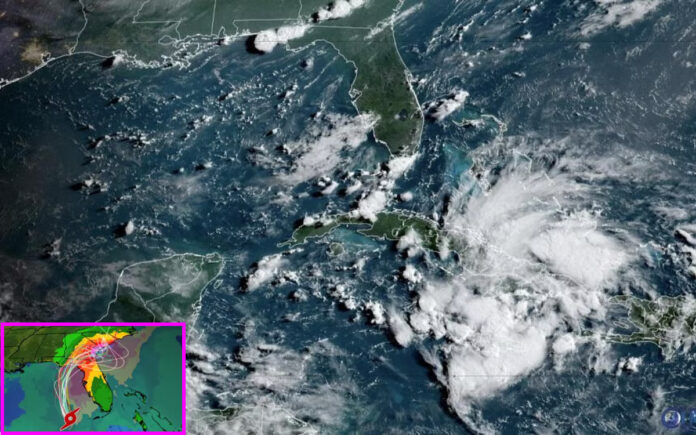Tallahassee: Tropical Storm Debby is anticipated to intensify into a hurricane by Sunday night, according to the U.S. National Hurricane Center (NHC), a shift from its earlier Monday forecast. This marks a significant change in the storm’s expected development timeline.
The 2024 Atlantic hurricane season, which began on June 1, is projected to be highly active, with forecasters predicting between 25 to 30 named storms, including four to seven major hurricanes. This forecast exceeds the previous record-setting season of 2005, which produced hurricanes Katrina and Rita.
In preparation for Debby, Governor Ron DeSantis has mobilized 3,000 National Guard members and issued emergency orders for most Florida cities and counties. Evacuations are underway in parts of the Gulf Coast counties, including Pasco, Hernando, and Citrus.
Jamie Rhome, deputy director of the NHC, emphasized the severity of the situation, stating, “It’s become clearer and clearer that Debby will become a hurricane before it makes landfall.” Rhome urged residents to follow evacuation orders and take necessary precautions.
The NHC updated its forecast at 2 a.m. EDT (6 a.m. GMT) after Debby, which had been a broad, disorganized system in the Atlantic, was named a tropical storm late on Saturday. At that time, Debby was moving at 14 mph (23 kph) towards the Gulf Coast, approximately 230 miles (370 km) south-southwest of Tampa. The storm’s winds, currently at 45 mph (72 kph), are expected to strengthen to 70 mph (113 kph) or more as it approaches hurricane status.
Having departed from Cuba’s northern coast on Saturday evening, Debby was about 100 miles (160 km) west-southwest of Key West, Florida, as per the NHC’s update.
The NHC has classified this situation as “life-threatening”, highlighting a range of hazards beyond just strong winds. Rhome warned of potential storm surges reaching up to 7 feet (2 meters) along Florida’s Big Bend area, where Debby is expected to make landfall just southeast of the Panhandle. “Now, I stand at six feet tall,” Rhome noted. “So that’s over my head.”
Heavy rainfall is also a concern, with up to 10 inches (25 cm) expected, and potentially up to 15 inches (38 cm) in some areas, with further increases possible if the storm slows or stalls over land.
Also Read | Philippines and Germany to Strengthen Defence Ties with New Agreement
After making landfall, Debby is expected to lose some strength but will continue to bring heavy rain as it moves across central Florida to the Atlantic coast. The storm is forecast to then move up the coast to Savannah, Georgia, and Charleston, South Carolina, early in the week.
Ocean surges are anticipated from Bonita Beach northward to Tampa Bay, potentially pushing sea waves further inland and causing significant damage. A tropical storm warning is in effect for extreme southern Florida, extending to the Fort Myers area, which was heavily impacted by Hurricane Ian in 2022.
Also Read | Nigerian President Advocates for Dialogue, End to Violent Protests
Debby’s path bears similarities to Hurricane Ian, which claimed 103 lives and inflicted billions of dollars in damage along the Gulf Coast.
So far, only one hurricane, Beryl, has formed in the Atlantic this year. Beryl was the earliest Category 5 storm on record, devastating the Caribbean and Mexico’s Yucatan Peninsula before hitting Texas as a Category 1 storm with winds up to 95 mph (153 kph).



